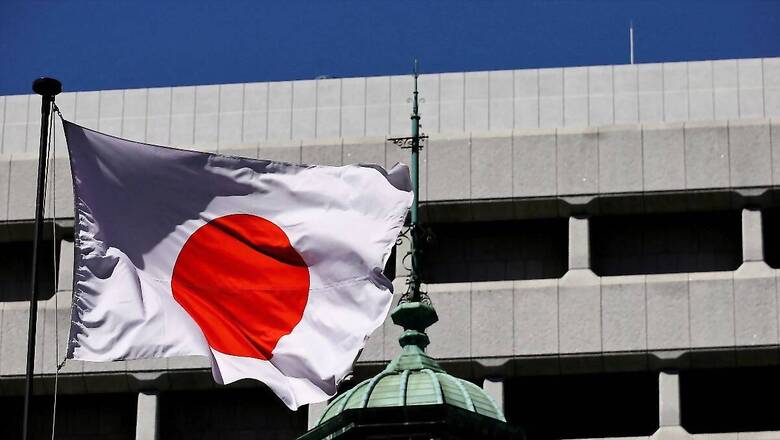
views
A new era dawns as the floodgates of cheap money close. After a decade of unprecedented monetary stimulus, central banks are desperately tightening their grip on credit to quell the global inflation inferno. The challenge now is to navigate a treacherous path: taming soaring prices without igniting an economic catastrophe.
The question now arises: How will this impact the world’s most vulnerable populations and the fragile developing economies that are already feeling the pinch? Why are central banks taking action? Well, they are clearly waging a battle against inflation, the insidious erosion of purchasing power. The era of cheap and abundant money fuelled a speculative frenzy, particularly in high-risk assets like cryptocurrency. Faced with soaring inflation, governments and central banks have limited tools at their disposal. One key strategy is to raise interest rates, which reduces the overall money supply in the economy. The US Federal Reserve has been aggressively employing this tactic recently.
With that said, Japan’s economy is experiencing a resurgence after decades of stagnation. The Bank of Japan’s controversial negative interest rate policy and the Yen’s historic decline mark a dramatic transformation. Japan’s prolonged economic downturn and battle with deflation provide crucial insights for other nations facing similar difficulties. Although these changes have caused turbulence, Japan’s economic health is now significantly improved compared to the past two decades. Stabilising inflation at 2-3 per cent is a key indicator of this positive shift.
Japan is also experiencing a long-overdue wage increase, which is expected to bolster the economy in the coming years. After a generation of economic hibernation marked by deflationary doldrums, Japan is finally seeing a price thaw. This seismic shift is poised to propel the economy forward for years to come.
Countries in Europe have been grappling with prolonged high inflation, so the idea of low inflation might seem alluring. However, this hasn’t been Japan’s experience. Why is that? Japan’s recent uptick in inflation is a positive development for its economy. For the past two or three decades, the country has been mired in a cycle of either deflation or very low inflation. This persistent price decline was primarily due to stagnant wages and limited price increases in the service sector. However, this trend has reversed. A severe labour shortage has forced companies to raise wages significantly, which in turn is expected to boost household incomes. This newfound spending power is anticipated to stimulate consumer spending and benefit the Japanese economy overall.
What other forces have been conspiring to finally shatter Japan’s deflationary spell? Beyond the undeniable impact of rising wages, currency fluctuations have also played a role. The Japanese yen’s decline has contributed to higher inflation in Japan by increasing import costs. However, while the yen remains weak, it is crucial that it maintains relative stability against the US dollar and the euro.
Japan’s inflation surge initially stemmed largely from a weakening yen, which drove up import costs. This was detrimental to Japanese households and small businesses. However, the situation is evolving. The inflationary pressure is now shifting from rising import prices to domestic factors, such as wage growth and service sector inflation. This change is positive for everyone in the Japanese economy, including large corporations, households, and small and medium-sized enterprises (SMEs).
The resurgence of inflation has jolted the Bank of Japan out of its decades-long deflationary slumber. A landmark decision to abandon negative interest rates in March 2024 marked the central bank’s first aggressive pivot, with interest rates moving from -1 per cent to 0 per cent and then to 0.1 per cent.
To achieve sustained inflation that aligns with the Bank of Japan’s (BOJ) elusive target of 2 per cent, the BOJ made a decisive move on July 31, 2024, by hiking interest rates to 0.25 per cent. Why was this rate hike such a groundbreaking event? While the US Federal Reserve and the European Central Bank aggressively raised interest rates to combat soaring inflation sparked by the pandemic, the BOJ remained an outlier. Its ultra-loose monetary policy, including negative interest rates, persisted until recently. Even though the BOJ’s increase to a range of 0 per cent to 0.25 per cent is modest compared to the hikes implemented by other major central banks, this step is significant.
Japan’s central bank defied history with its first rate hike since 2007. Haunted by past rate hikes in 2000 and 2007, which triggered financial crises and political backlash, the BOJ has cautiously entered this new era, wary of potential market turmoil.
Japan has historically been a major investor in foreign assets, particularly US Treasury bonds. As Japan increases its interest rates, a trend of repatriation is likely to emerge, with Japanese investors shifting their portfolios back home. This exodus could lead to a significant outflow of funds from US Treasuries and other foreign investments. A similar trend might occur in other countries, including India, where Japanese investors hold substantial portfolios.
Japan, like other developed nations, faces a significant debt problem. Its public debt stands at a staggering 265 per cent of GDP. This high debt level has been manageable due to near-zero interest rates. However, as interest rates rise, Japan’s fiscal health will be strained by a growing interest burden. Consequently, the Bank of Japan (BOJ) is likely to proceed cautiously with rate hikes, avoiding any sudden increases that could exacerbate the situation. This cautious approach is crucial, as Japan’s debt remains a pressing concern.
Japan’s experience is a glaring testament to the inadequacy of monetary policy alone in combating deflation. Aggressive measures like quantitative easing and negative interest rates have proven ineffective against deep-seated economic problems. To truly escape this economic quagmire, a multi-pronged approach is necessary, combining fiscal measures, structural reforms, and demographic strategies. Global policymakers should take this cautionary tale into account and strengthen financial safeguards to prevent future crises.
To prevent similar crises, global policymakers must strengthen financial oversight through macroprudential measures, which include subduing systemic risks and the volatile tide of capital flows. A perfect storm is brewing in the global financial markets. The imminent clash between Japan’s policy shift towards higher interest rates and anticipated rate cuts elsewhere is set to unleash a tidal wave of capital movement. Certainly, the ebb and flow of international money dictates exchange rate fluctuations. The ensuing turmoil is expected to dramatically reshape currency exchange rates and bond yields, with the full impact becoming clear in the coming months.
Megha Jain is Assistant Professor, Shyam Lal College, University of Delhi/Visiting Fellow, Pahle India Foundation, India; Vanyaa Gupta is Management Enthusiast, Delhi, India. Views expressed in the above piece are personal and solely that of the author. They do not necessarily reflect News18’s views.




















Comments
0 comment